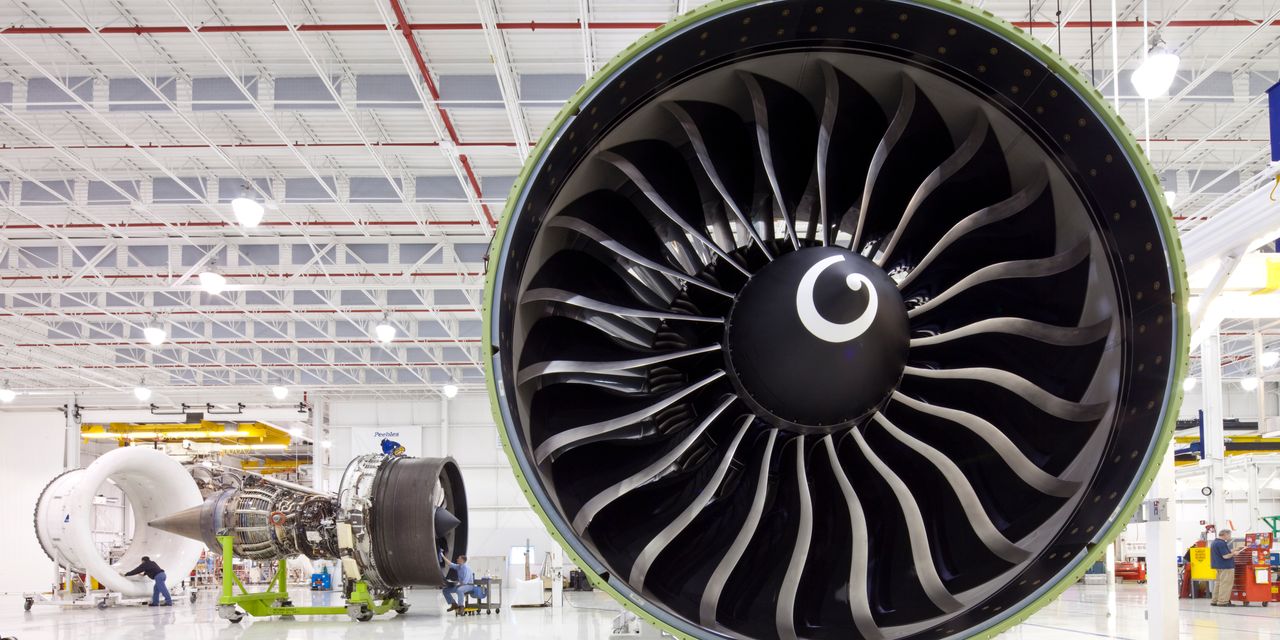General Electric’s turnaround has come a long way—long enough that investors should start thinking about the unthinkable: the return of a meaningful dividend.
That wasn’t something that most investors were thinking about when CEO Larry Culp cut
General Electric’s
(ticker: GE) payout to just one penny in October 2018. Back then, the hope was that the company would simply survive as its shares tumbled and its debt load looked increasingly unmanageable. To save money, the dividend, which had been cut in half from 24 cents to 12 cents in 2017, was cut to 1 cent a quarter when Culp took over in 2018, saving the company some $30 billion in payouts over the past few years. (The quarterly dividend now stands at 8 cents after a reverse stock split.)
Things are looking much better for the U.S. industrial icon these days. It reported second-quarter earnings per share of 68 cents last week, far better than Wall Street was expecting. Even its struggling power business eked out an operating profit of $18 million, its third quarterly profit in the past two years. It wasn’t easy getting to this moment. It took selling businesses, paying down some $100 billion in debt, spinning off GE’s healthcare division, and restructuring the power generation division while preparing to spin it off.
Now it’s time to start thinking about the dividend once again. To pay a dividend, a company needs free cash—or the money left after covering operating expenses and capital spending—and GE is finally producing that. Analysts project that GE will generate about $4.3 billion in free cash flow this year, with growth projected through 2026. Most of the cash flow comes from the company’s aerospace business, where GE has an enviable position making jet engines.
GE is adding another bit of financial flexibility by announcing on its second-quarter earnings conference call that it would be calling—essentially paying off or retiring—its preferred stock in September, which will free up more cash flow for common shareholders.
Even Culp is open to the idea of lifting the dividend. “As a shareholder, I wish it were higher,” he tells Barron’s.
Culp has one more order of business before that happens: He needs to complete the separation of GE Aerospace and GE Vernova, the name given to the gas power, grid, and wind turbine businesses. GE Aerospace will become the main GE, replacing the name General Electric.
The spinoff of Vernova is the most important thing for the company right now, Culp says. After that, it will be time for the boards of the two companies to “craft a tailored capital-allocation strategy for each business.”
The spin, slated for early 2024, isn’t that far away, and a dividend should come with it. “We would expect GE Aero to pay a dividend in line with its aerospace peers after the spinoff,” says RBC analyst Deane Dray, who rates GE shares a Buy and has a $130 price target for the stock.
What will the dividend look like?
S&P 500
companies paid out roughly 30% to 40% of their annual net income as dividends in recent years.
Honeywell International
(HON), another industrial giant with a large aerospace franchise, has paid out about 40% of its net income.
At GE Aero, that would result in a dividend as high as $2 a share in a year or two, as the commercial aerospace business continues to recover from pandemic-induced lows. Dray thinks the company should start conservatively by paying out about 30% of income, putting a potential dividend in the range of $1.30 a share. That seems about right. It would put the dividend yield at 1.2%, a lot better than today’s 0.3% yield.
It’s just one more reason to hold on to GE stock after its epic run.
Write to Al Root at [email protected]
Read the full article here



